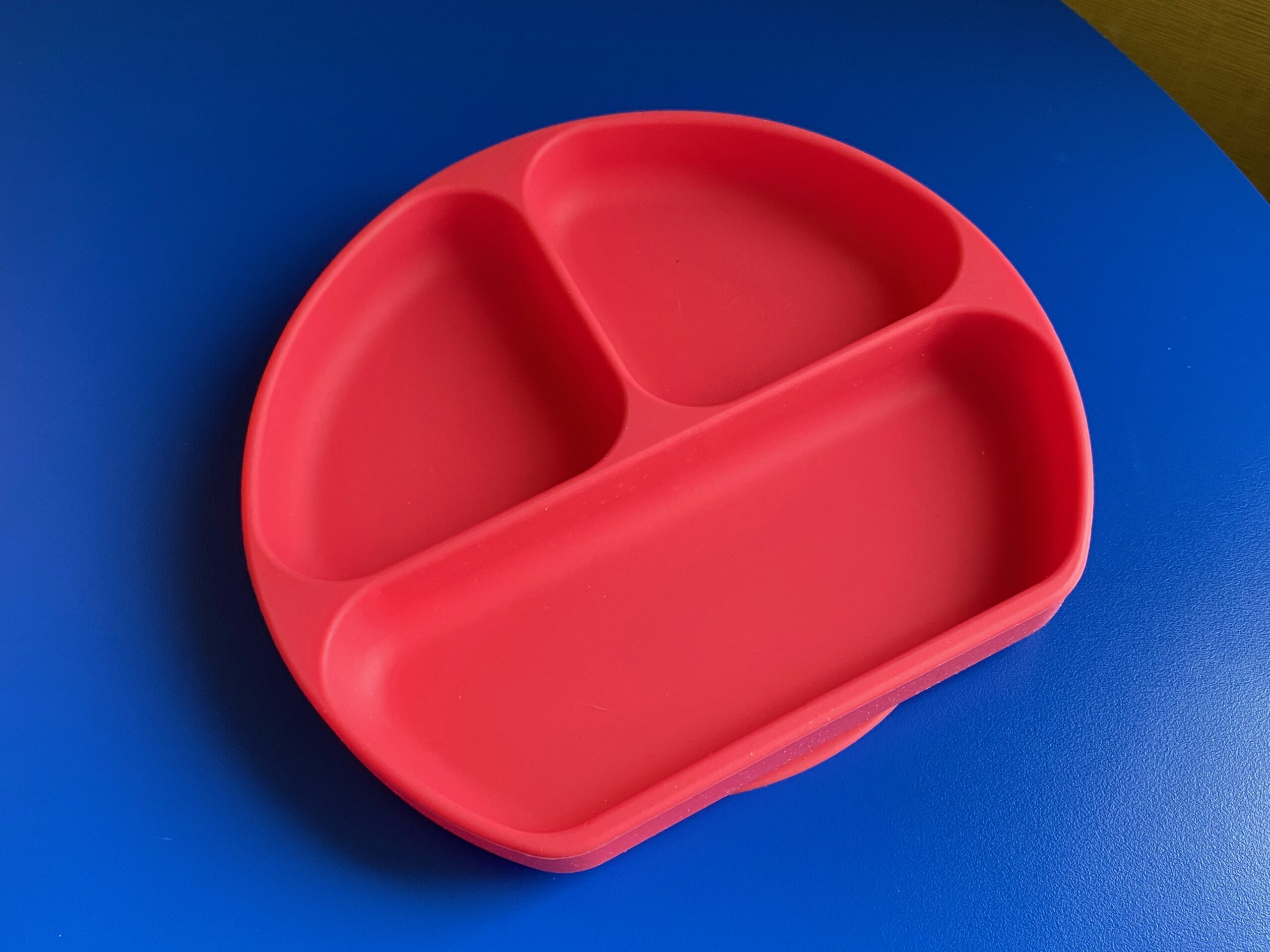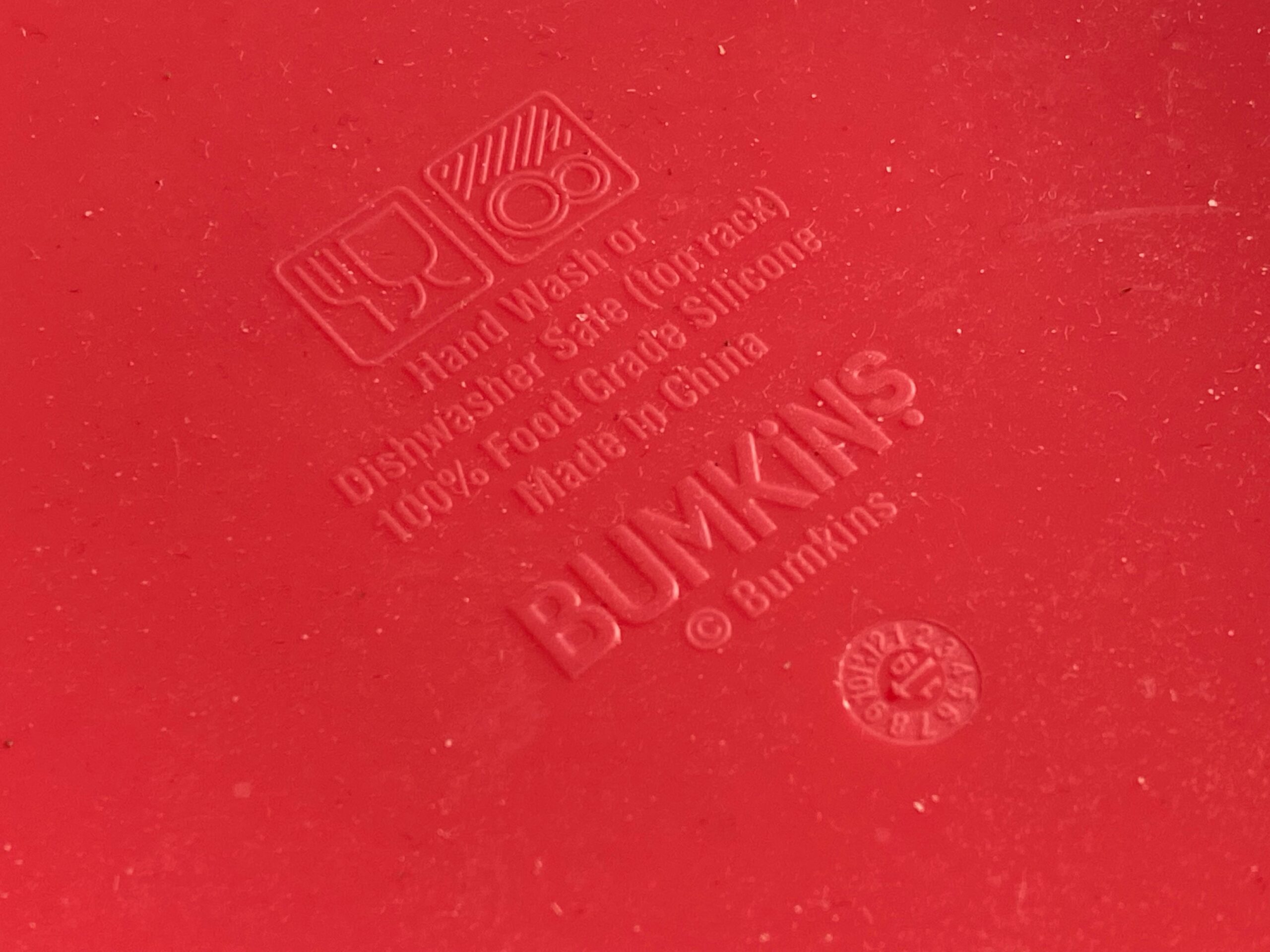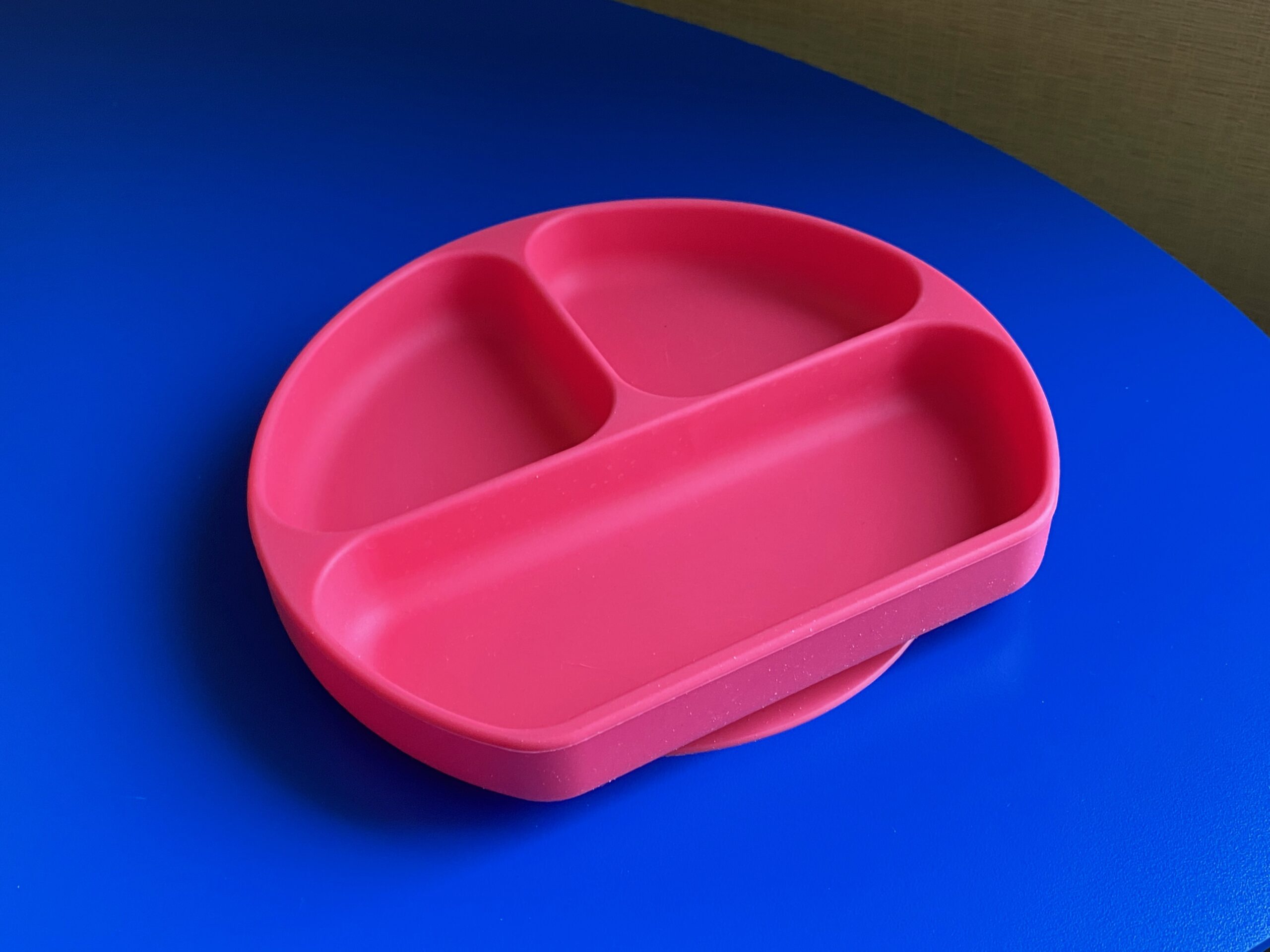Pink Silicone Dish by Bumkins (Made in China, 100% Food Grade Silicone): 11 ppm Cadmium (safe by all U.S. and international standards)
Introduction:
Tamara Rubin is a federal-award-winning independent advocate for consumer goods safety and a documentary filmmaker. She is also a mother of Lead-poisoned children, her sons were acutely Lead-poisoned in 2005. Since 2009 Tamara has been using XRF testing (a scientific method used by the U.S. Consumer Product Safety Commission) to test consumer goods for toxicants (specifically heavy metals), including Lead, Cadmium, Mercury, Antimony, and Arsenic. All test results reported on this website are science-based, accurate, and replicable. Items are tested multiple times, to confirm the test results for each component. Tamara’s work was featured in Consumer Reports Magazine in February of 2023.

Published: February 10, 2022 – Friday
Overview:
Cadmium is found at trace levels in most silicone that I have tested; Cadmium is a known carcinogen. I have, however found examples of silicone kitchenware (or components of silicone kitchenware) that have tested negative for Cadmium — so it is definitely possible to make silicone products without trace Cadmium contamination.
That said, the amount of Cadmium found in this dish (in the 5 to 14 ppm range) is considered safe by ALL standards even the strictest standards (from the State of Washington and the country of Denmark.) [Denmark considers consumer goods safe for use by children if Cadmium levels fall below 75 ppm; in the U.S., Washington State considers items safe for use by children if Cadmium levels fall below 40 ppm.] You can learn more about the concerns for Cadmium by clicking this link.
Other considerations:
- From an ethical and political standpoint, I hold the perspective that items intended for use by children should be Cadmium-free in all components whenever possible.
- I am primarily concerned for the presence of Cadmium in silicone products like baby bottle nipples (or silicone chew toys – often sold for use by kids with sensory issues), where a child might have that product in their mouth for several hours a day (with normal use as intended.)
- The presence of Cadmium seems to sometimes (but not always) be associated with the use of pink and red pigments in silicone. I think companies should reconsider the use of pink and red pigments as a first step in trying to eliminate trace Cadmium contamination from their silicone products. [I have found some clear / white silicone products to test positive for Cadmium, so this is not a rule across the board, but a first step in addressing considerations on this issue.]
- While I don’t necessarily have a concern for trace (low) levels of Cadmium found in a dish like this (given normal use of this product as intended), I do have more concern for Cadmium found in silicone products that might be used in the oven to cook food (especially food-contact products used at high temperatures – like one normally uses in an oven – for extended cooking times [here’s one example]). This concern is amplified by the fact that consumers do not have any way to test for Cadmium content and therefore no way to know if a product might test positive for high levels of Cadmium, trace levels of Cadmium or no Cadmium at all.
- Separate from the concern for Cadmium contamination of silicone, silicone products are also sometimes contaminated with Lead at levels that are above what might consider to be “trace contamination.” Here is one example from KitchenAid.
- As a result of the above points (and especially the potential for high levels of both Lead and Cadmium contamination in “food grade” silicone), I never recommend any silicone products on this website.
- Separately – I have personally chosen to limit silicone products in our home to products that will not be used to cook food; one example that does not concern me in this context is silicone ice cube trays (we got ours from Ikea). [I have found that silicone products that I have tested from Ikea tend to test negative (or at least positive at lower levels) for trace Cadmium contamination. Here is one example. ]
To see more examples of silicone products that have tested positive for trace levels of Cadmium, click here.
Some additional reading for those new to this website:
- To learn more about the testing methodology employed for the test results reported on this website, click here.
- For a quick menu to explore more categories of tested items on this website, click here.
- For a quick video tutorial showing you how to most efficiently use this website (including all the ways to find Lead-free consumer goods we have tested and reported on), click here.
- To learn more about hiring Tamara for a one-on-one home consultation or a small community event, click here.
- To find out how to send a single item in for testing, click here.
- Please follow us on Instagram, Facebook and Twitter!
- Please subscribe to the Lead Safe Mama, LLC e-mail newsletter to be among the first to see any and all newly published test results here on the website too!
- To check out our new(ish) site that only has Lead-free things for sale, click here!
More information to be posted shortly, but in the meantime the full XRF test results for the item pictured are below.
Pink Silicone Dish by Bumkins
(Made in China, 100% Food Grade Silicone)
Reading #1) Center of food surface of dish
30-second test
- Lead (Pb): non-detect
- Mercury (Hg): non-detect
- Cadmium (Cd): 11 +/- 3 ppm
- Arsenic (As): non-detect
- Antimony (Sb): non-detect
- Bromine (Br): non-detect
- Chromium (Cr): non-detect
- Niobium (Nb): 294 +/- 11 ppm
- Indium (In): 11 +/- 4 ppm
- No other metals detected in consumer goods mode.
Reading #2) Thick side of dish
30-second test
- Lead (Pb): non-detect
- Mercury (Hg): non-detect
- Cadmium (Cd): 8 +/- 3 ppm
- Arsenic (As): non-detect
- Antimony (Sb): non-detect
- Bromine (Br): non-detect
- Chromium (Cr): non-detect
- Niobium (Nb): 292 +/- 10 ppm
- Indium (In): 9 +/- 4 ppm
- No other metals were detected in consumer goods mode.

Never Miss an Important Article Again!
Join our Email List












Hi Tamara!
I have a question. Should I be concerned about brass burners in cooktops? In my country all reputed brands have switched to brass burners in cooktops. I will be touching it almost daily to clean underneath plates after cooking. Could you please share your views?
Have you test Go Sili silicone straws? My daughter uses them but also bite them as she drinks … now I’m worried about the cadmium exposure. 🙁
They most likely test positive for trace levels of Cadmium. I do not recall having tested that brand. Here’s how to send something in for testing:
https://tamararubin.com/2019/08/tamara-can-i-send-you-one-of-my-dishes-to-test-for-lead/
Tamara
Hi Tamara,
After hours of research on silicone and its safety this is the first I’m reading about heavy metals in silicone! I thought it was a much safer choice for baby instead of plastic… now I’m rethinking. Are there any recommendations/alternatives you can make for baby teether and spoons? I try to purchase US made but it’s so difficult these days. Finding out that the fda does allow some amounts of heavy metals in baby products – it’s shocking! Thank you for your work.
Hi Tamara!
I really need help! I’m looking to buy an uninsulated Pura Stainless Sports bottle and an insulated Classic Klean Kanteen bottle as I want to go 100% plastic free. I know the insulated Pura Kiki had lead in it and I’m super disappointed in the company for acting how they did but since they’re only one of the few who are completely plastic free, I’m still considering buying from them.
I’d like to know if the uninsulated Puras are lead free and is their silicone (they claim they have medical grade silicone) safe from Cadmium?
Same goes for the Klean Kanteen. They have a silicone O-ring on their bottle caps but there’s absolutely nowhere to be specified if it’s even food grade (most O-rings are industrial grade thus not regulated as much as food grade and can be harmful). I wonder if the silicone rings are safe and Cadmium free?